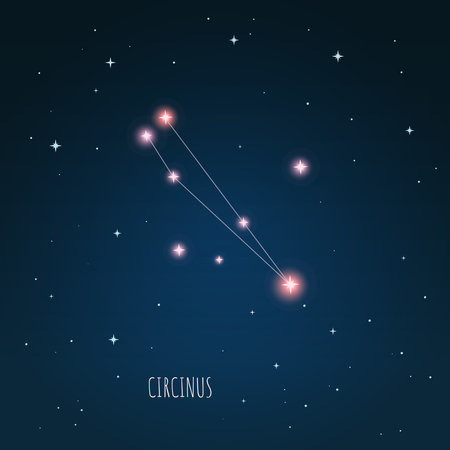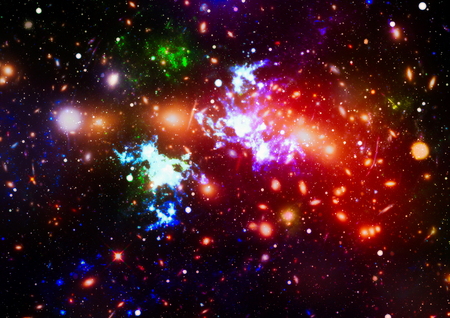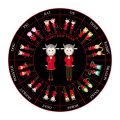1. Introduction: The Celestial Canvas Above Britannia
Imagine the ancient skies stretched wide over the rolling hills and misty moors of Britannia, a land both wild and enchanting. Long before city lights dimmed the stars, our ancestors stood beneath this vast celestial tapestry, their eyes drawn upwards in awe and curiosity. For the Britons of old, the night was alive with mystery; every twinkling star and shifting constellation whispered secrets from realms beyond. Life was uncertain—threats of war loomed, alliances shifted like shadows, and the future was as changeable as the British weather. In these moments of uncertainty, it was only natural for these early islanders to seek guidance from above. Astrology became more than mere speculation; it was a source of hope, direction, and even strategy. By reading the stars, ancient Britons found reassurance amidst chaos, believing that the heavens offered signs to help them navigate not just daily life but also the perils of conflict and conquest.
2. Stars as Omens: Early British Astrological Beliefs
The night sky has always been a canvas for the hopes and fears of those who gaze upward, and for ancient Britons, the stars shimmered with profound meaning. Long before telescopes or scientific charts, the inhabitants of these misty isles looked to constellations, wandering planets, and rare celestial events for guidance—especially in times of uncertainty and conflict. Their beliefs were a patchwork quilt, woven from native Celtic reverence for nature and cosmology, stitched together with threads from Roman and later Saxon influences.
Native Interpretations: The Celtic Perspective
To the Celts, every element of the natural world was alive with spirit and symbolism, and the heavens were no exception. Major constellations were not simply random dots but living stories—spirits of warriors past or omens sent by the gods. Seasonal changes in star patterns marked critical moments in the agricultural calendar, guiding when to sow or reap—and just as importantly, when to prepare for battle.
| Celtic Sky Symbol | Believed Omen |
|---|---|
| The Wyrm (Draco) | Protection or warning before conflict |
| The Hunter (Orion) | Success in upcoming challenges |
| Morrigan’s Veil (Milky Way) | Transition between worlds; fate of souls in war |
Blending Traditions: The Roman Influence
When Roman legions crossed into Britain, they brought their own astrological wisdom—rooted in Greek learning yet shaped by empire. The meeting of these cultures did not erase local lore; instead, it created a rich fusion. Roman astrology introduced planetary deities like Mars (god of war), whose position was scrutinised before military campaigns. Over time, British druids and seers adopted elements of these imported systems, weaving them into their own rituals and readings.
| Imported Roman Practice | Adaptation in Britain |
|---|---|
| Consulting augurs before battles | Druidic ceremonies blending augury with local star signs |
| Tracking Mars and Jupiter for omens | Interpreting planetary alignments alongside lunar cycles |
Natural Phenomena as Portents
Beyond individual stars or planets, sudden natural phenomena—shooting stars, eclipses, unusual cloud formations—were seen as urgent messages from the divine. Such occurrences could rally warriors or warn chieftains to delay an attack. In this way, astronomy and astrology became inseparable from both daily life and decisions of war.
The early British fascination with the sky reveals a gentle wisdom: that even amid uncertainty and looming danger, there is beauty and guidance to be found above us. Their legacy lingers in modern British folklore—a quiet reminder that we are all connected by the same ancient stars.

3. Sacred Sites and Skies: Astronomy Aligned Stone Circles
Across the rolling landscapes of Britain, ancient stone circles—most famously Stonehenge—stand as silent witnesses to a world where the heavens deeply influenced earthly affairs. These mysterious monuments were not erected at random; rather, they were carefully aligned with celestial events such as solstices and equinoxes. For the ancient Britons, observing the sky was both a spiritual devotion and a practical necessity, especially in times when uncertainty and conflict loomed.
Stonehenge, with its imposing sarsen stones framing the rising midsummer sun, exemplifies this dual purpose. The intricate alignment with astronomical phenomena suggests that these sites were much more than mere gathering places. They functioned as sacred observatories, where priests and tribal leaders interpreted the movements of stars and planets for guidance. Such observations could herald auspicious moments for beginning campaigns or fortifying defences, fostering a sense of cosmic order amid the chaos of war.
The stone circles also acted as communal spaces where rituals intertwined with tactical planning. During times of unrest, tribes would gather within these hallowed perimeters to seek blessings from celestial deities, perform rites for protection, and consult astrologers who read omens in the sky. In this way, the very architecture of these sites became an anchor for spiritual reassurance and strategic foresight—a testament to how profoundly the ancient Britons wove astrology into their preparations for both peace and conflict.
4. Astrology and Strategy: Consulting the Cosmos Before Battle
For ancient Britons, the sky was more than a glittering canopy—it was a living map of omens, brimming with clues about fate and fortune. Chieftains and warriors alike turned to celestial wisdom before marching into battle, weaving astrology into the very fabric of their tactical decisions. Let’s wander back through historical echoes and folklore, where the stars above shaped destinies on earth.
The Warrior’s Ritual: Seeking Signs in the Night Sky
Long before gunpowder or sophisticated armour, tribal leaders would gather beneath the moon and stars, seeking counsel from druids and wise women versed in the art of reading planetary alignments. The sighting of a blood-red moon or an unusual conjunction of planets could be interpreted as a harbinger—either a warning to delay an attack or a blessing to press forward with courage.
Celestial Events and Their Meanings
| Celestial Event | Common Interpretation by Ancient Britons | Strategic Action |
|---|---|---|
| Lunar Eclipse | Omen of upheaval or change; spirits unsettled | Postpone conflict, fortify defences |
| Meteor Shower | Blessing from ancestors; opportunity for victory | Initiate surprise attacks, boost morale |
| Full Moon | Time of clarity and power; heightened intuition | Finalise strategies, gather allies |
| Comet Sighting | Dramatic shift in fortunes; unpredictable outcomes | Consult seers, prepare for both triumph and loss |
The Wisdom of Druids: Blending Astrology with Tactics
Druidic advisors played a pivotal role, charting planetary movements and interpreting omens with careful attention. Their insights shaped everything from the timing of ambushes to the selection of sacred battlegrounds. Many tales recount how a favourable alignment—perhaps Mars shining brightly—was seen as a cosmic nod towards valour and success, emboldening warriors with hope.
A Dance Between Destiny and Free Will
The belief that human actions were interwoven with celestial rhythms offered both comfort and caution. It softened the sharp edges of fear before battle, reminding ancient Britons that they were not alone—the stars themselves stood witness, offering guidance in moments of peril. In this gentle dance between destiny and free will, strategy became an act of both courage and trust in the mysteries above.
5. Transmission and Transformation: The Roman Influence
With the arrival of the Romans in Britain, the landscape of astrology and its role in warfare underwent a profound transformation. The Roman Empire brought with it a sophisticated astrological tradition, deeply rooted in Greek philosophies but adapted for imperial ambitions. Suddenly, the native Britons found themselves encountering not only foreign soldiers but also new ways of reading the stars—methods more systematic and meticulously charted than their own.
Roman officers often consulted professional astrologers, known as mathematici, before embarking on campaigns or making critical decisions on the battlefield. These astrologers employed complex charts, planetary hours, and horoscopes, blending practical military strategy with celestial counsel. Local chieftains and druids observed these practices with curiosity and, over time, began to incorporate select elements into their own spiritual traditions. This fusion saw native star lore entwined with imported Roman techniques, creating a hybrid approach unique to Romano-British society.
The influence was not merely procedural but philosophical too. Where the ancient Britons had looked to omens and seasonal cycles, the Romans introduced the idea that fate could be read in the positions of Mars, Jupiter, and Venus—planets associated with war, victory, and fortune. War leaders now weighed both homegrown portents and imported planetary alignments before engaging in battle. The stars became not just a mystical guide but a strategic tool in assessing risk and opportunity.
This mingling of traditions also brought about subtle shifts in power dynamics. British elites who mastered Roman astrological techniques gained new prestige and influence among their peers. At times, this even led to tension between those who clung to ancestral wisdom and those eager to embrace continental knowledge. Yet overall, this period marked a gentle evolution—a weaving together of old faiths and new sciences under British skies.
In essence, the Roman conquest did not erase indigenous beliefs; rather, it layered them with fresh insight, allowing both traditions to coexist in an ever-changing world. Through this confluence, astrology remained central to warfare—but now shimmered with fresh possibility, guiding warriors with both familiar myths and innovative cosmic calculations.
6. Reflection: Echoes of Ancient Guidance in Modern Britain
As we gaze up at Britain’s night sky, veiled by shifting clouds and scattered stars, it’s impossible not to feel the subtle influence of ancient wisdom lingering in the air. The practices of our ancestors—those early Britons who looked to the heavens for counsel in times of war and peace—have woven themselves quietly but persistently into the fabric of British culture. Even today, astrology finds its place within the tapestry of daily life, from horoscopes tucked away in newspapers to celestial motifs that adorn everything from jewellery to public spaces.
While modern warfare is guided by strategy and technology rather than omens and star charts, echoes of those age-old beliefs remain. There’s a gentle reverence for the unknown—a sense that perhaps fate, fortune, and the cosmos are still entangled with our destinies. It lingers in the superstitions whispered before big events, in the quiet hope for “good luck” under a full moon, or even in the way we watch meteor showers with awe and curiosity.
The British relationship with astrology is often understated but enduring. Across bustling cities and tranquil countryside alike, people still consult their star signs for reassurance or guidance, seeking comfort in knowing they are part of something larger—an ancient heritage that stretches back millennia. This connection to the stars is not just about prediction; it is about identity, belonging, and continuity. In moments of uncertainty or transition, many find solace in age-old rituals: reading their monthly horoscope, carrying a lucky charm marked with a zodiac sign, or gazing skyward on Midsummer’s Eve.
In this way, astrology continues to shape the nation’s collective imagination—a gentle thread linking past and present. The same constellations that once inspired warriors now inspire poets, artists, and everyday dreamers. Whether taken seriously or simply enjoyed as tradition, these celestial stories remind us that each generation inherits more than just land or language—we inherit wonder.
So as Britain moves forward in an ever-changing world, there remains a quiet respect for what lies above. The stars may no longer determine battle plans, but their presence continues to encourage reflection and hope. In embracing both science and mystery, modern Britons carry forth a legacy: one that values guidance not only from history books but also from the silent beauty of the night sky itself.


